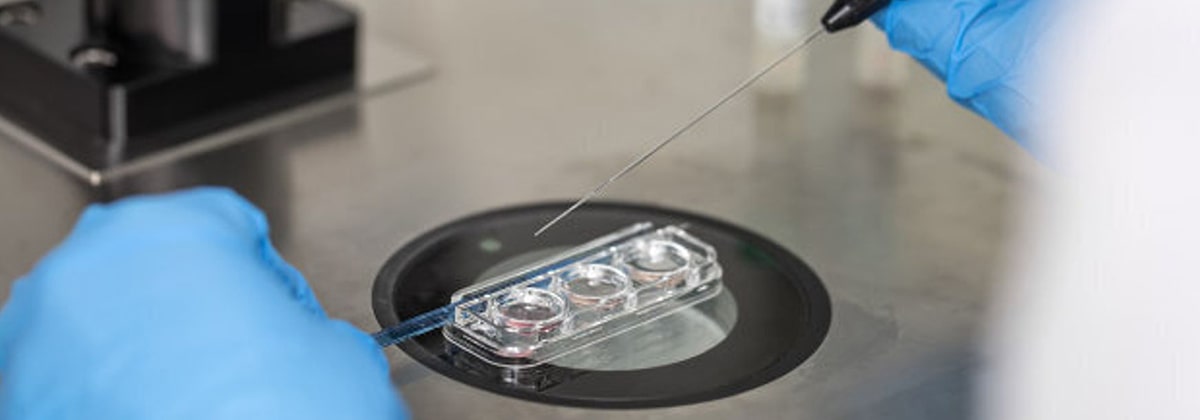
What is Micro Injection (ICSI)?
ICSI is done using very powerful microscopes and micromanipulators. The embryologist holds an egg with the help of a thin glass pipette and introduces the sperm into the egg with a glass needle seven times thinner than a human hair.
ICSI provides fertilization with only one sperm cell injected into an egg. Fertilization with the ICSI method is around 70% for each injected egg.
IVF treatment steps with microinjection method
We apply different treatment protocols to our patients. These are preferred according to the patient’s condition. Generally, there are the following steps in the treatment process:
Stimulation of the ovaries
On the 3rd day of the new menstrual period, drugs containing hormones in the form of injections are started to stimulate the ovaries. The purpose of using these drugs is to ensure the development of more than one egg cell in the ovaries. This increases the chances of pregnancy. Antagonists are added to the treatment, usually 6 days after the start of hormone therapy, and continued until the end of the treatment. Egg stimulation time varies from person to person. The average time is about 10-12 days. In this period, egg development is followed by ultrasound.
Egg collection
When the egg cells reach a certain maturity and size, they are cracked with a different hormonal needle that allows the eggs to crack. Egg collection is done 34-36 hours after injection. It is very important that this injection is made on time.
Fertilization of eggs
Eggs are fertilized with prepared sperm using the microinjection method. Fertilization occurs in approximately 12-15 hours and is detected under the microscope. It is a very important issue whether the eggs are fertilized by sperm or not.
This can only be known one day after the eggs are collected, and the result is often given to the patient over the phone. In addition, the time for the transfer of embryos is decided.
Transfer of embryo
Split eggs are called embryos. Transfer is done 48-72, sometimes 120 hours after egg collection. When to transfer depends on the number and quality of embryos. Embryos are introduced into the uterus by gently passing them through the cervix with the help of a thin plastic tube-shaped catheter.
The number of embryos to be transferred is usually agreed with the gynecologist prior to administration. The transfer process is painless and does not require anesthesia. You can be discharged after a rest period of half an hour. About two weeks later, the patient is given a pregnancy test.
pregnancy support
Following the embryo transfer, we give our patients the hormone progesterone. This hormone is a hormone produced by the body and has a protective role in pregnancy. Thus, early miscarriages that may occur due to its deficiency are prevented. If the patient becomes pregnant, this treatment is continued until the 12th week of pregnancy.
